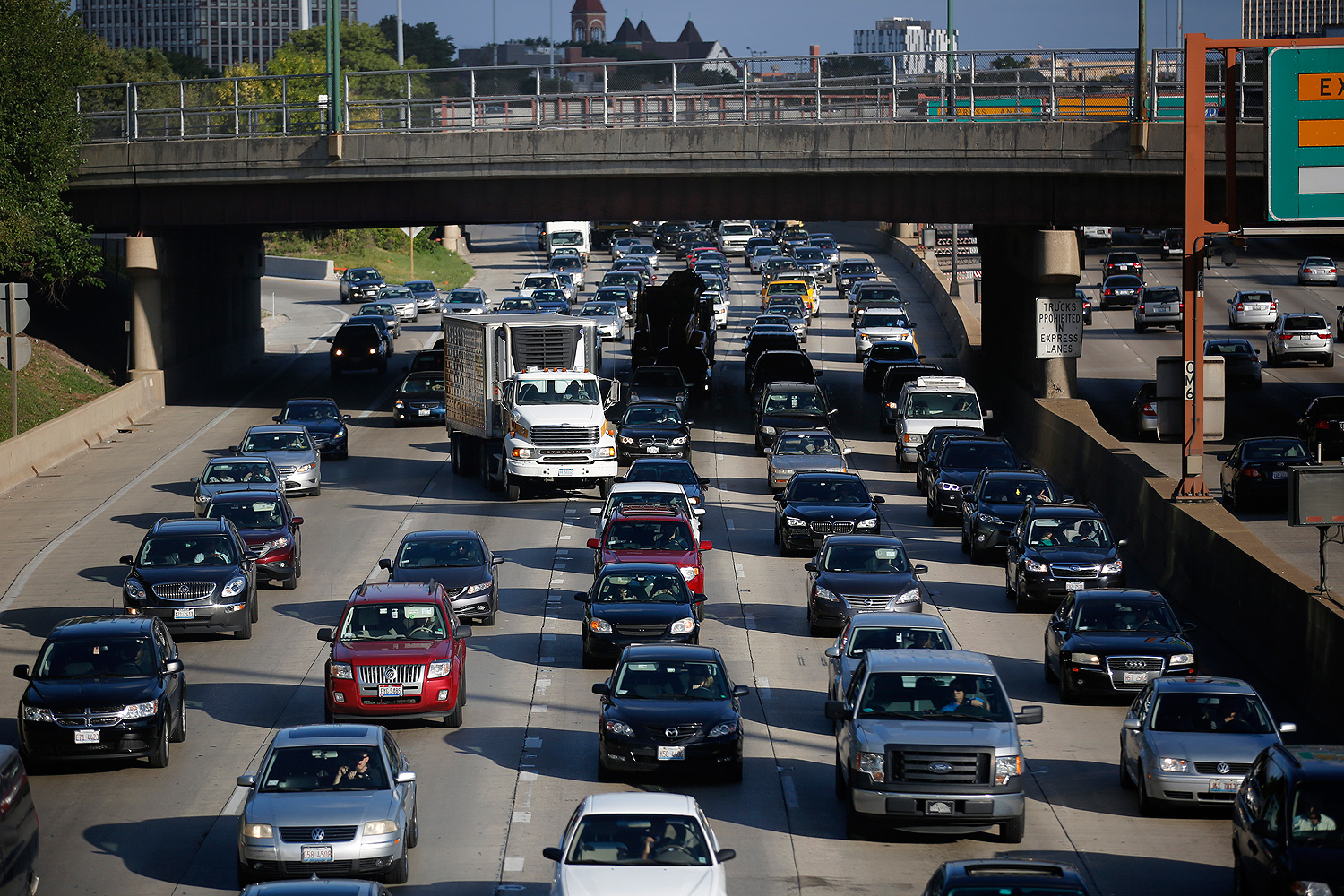Illinois Senate leader John Cullerton recently proposed an idea that's been much-discussed nationwide—but only tried in fits and starts—as an alternative strategy to fund flagging infrastructure budgets: taxing vehicles by miles driven, not by a gas tax. And he pulled it almost immediately "following public outrage," reports the Trib. Certainly some of the coverage was hostile, but mostly because of the idea's unfamiliarity than its specifics. A gas tax is already kind of a proxy for miles driven. So why institute a whole new system—one that's comparatively expensive to administer? Mike Riopell of the Daily Herald asked.
[Cullerton] said gas-guzzling vehicles would probably pay less in total under his idea because the 1.5 cents per mile will be less than their gasoline taxes. Owners of efficient cars might pay more in taxes, he said, but they also spend far less on gasoline to begin with.
"The Prius owners are the reason we need the bill," he said.
Well, maybe not yet. Right now electric vehicles are estimated to cause about $72 million in gas-tax revenue loss nationwide. By 2025 that could rise to $200 million-$900 million, depending on the scenario, by 2025. By contrast, Illinois brought in $1.16 billion in revenue from gas taxes in 2014.
The big problem is that all cars have gotten more efficient, vehicle-miles traveled have stagnated (and have fallen by per capita measures) over the past 15 years after rising for decades, and gas-tax rates haven't been adjusted for inflation. Illinois's hasn't changed since 1990, and the federal rate hasn't changed since 1993.
It's possible that in the medium term, again depending on their popularity, that electric vehicles could genuinely start to make a dent in gas taxes. Tesla and Chevy have introduced new models that are around $30,000 with a 200-mile radius, considered the baseline for widespread acceptance. So the Metropolitan Planning Commission is actually calling for a miles-driven tax by 2025, when projections suggest that use of electric vehicles might start to cause non-trivial declines in revenue. But there's this, as an MPC spokesman told Streetsblog Chicago: "Griffith-Stegink pointed out there will be some equity issues to sort out. For example, we don’t want to penalize people who have no choice but to drive many miles to work, or to run errands."
A friend, on seeing the news about the vehicle-mile tax, asked me about this. Would it fall hardest on suburban and downstate residents? Intuitively, you'd think so. Take my family, for example: We have a car, and we use it at least five days a week. But most days we only drive three miles. My wife walks to the train; I drive my daughter to day care; I bike to work; my wife picks up the car and the kid; I bike home. Most people I know in Chicago own cars; most of them don't drive them very often or very far. That's not possible in much of the state.
So how much of a difference does density and access to public transit make in how much people drive? A lot, it turns out. The Illinois Department of Transportation collects statistics for annual miles traveled in every county. In Cook County, it was just under 6,000 miles per capita in 2014, the least in the state. In Cumberland County, the highest, it was just over 28,000. (Below, counties with more Vehicle Miles Traveled per capita are marked in darker red, and counties with lower numbers are lighter red.)
Vehicle Miles Traveled isn't a perfect metric—it only reflects miles traveled by any vehicle within county lines, so it ignores who is actually doing the driving (whether it's a county resident or not). Another way to look at it is the data the Illinois Department of Employment Security gathers on commuting patterns. In Cook County, 18 percent of workers commute by public transportation; the next highest total is DeKalb county at just under 3 percent. (The statewide average is 9 percent—that's how big Cook County is.)
This is different from commute length, of course. Cook County has the highest percentage of commutes of 40 minutes or more (35 percent, compared to 29 percent, the second-highest, in Pulaski County). The collar counties, as you might guess, come in pretty high: DuPage at 28 percent, Lake at 26 percent, Kane at 20 percent, Will at 20 percent, and McHenry at 17 percent. Downstate counties do really well on commute time—in many counties, half the population or more has commute times of 20 minutes or less. It just requires a lot of driving. One day, but probably not anytime soon, it could cost more, too.



